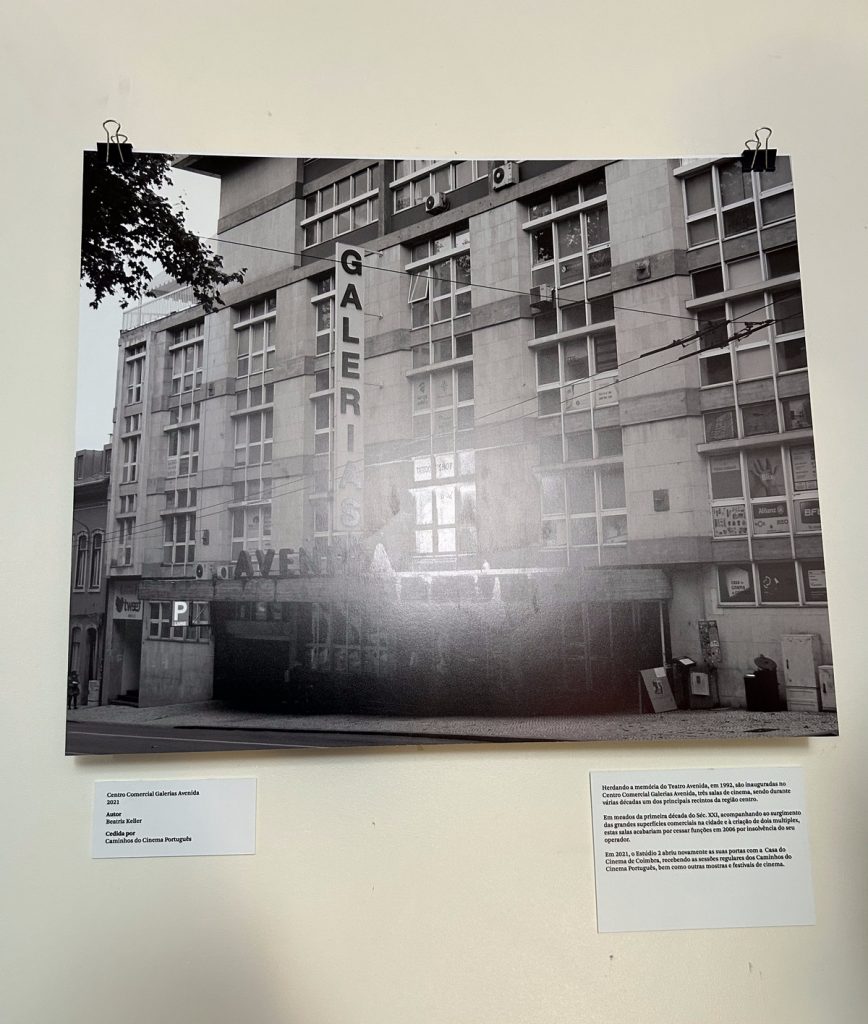Abandoned Cinemas of Coimbra: An exhibition that denounces a global phenomenon
The 29th edition of the Festival Caminhos do Cinema Português showcased the strength of Portuguese cinema, not only with a rich selection of short and feature films, but also with a trip down memory lane at the Casa do Cinema de Coimbra.
Festival Director, Tiago Santos, has adamantly pursued the realisation of a special photographic exhibition to remind all visitors how the ancient Portuguese capital flourished with movie theatres that since have closed down permanently. This phenomenon does not pertain to Coimbra alone: Cities worldwide have seen their lights go off, as ticket sales diminished and voracious multinational companies took hold of their venues, transforming those cinema houses into shopping stores.

‘Abandoned Cinemas of Coimbra’ is the result of a research conducted in the region’s archives and conversations with those who attended and documented cinematic moments of a past era. In the exhibition, we can observe how the use and structure of various buildings evolved in various ways.
The photographic journey begins with Teatro Avenida, which screened Lawrence of Arabia in 1965. This venue first opened its doors in 1892, when the seventh art was just coming to life. The theatre was the brainchild of tailor José Maria Mendes de Abreu who had a strong passion for the arts. This cultural hub adopted the name of Avenida around 1910, and had numerous theatre and magazine theatre shows. It was later adapted into a cinema room for regular projection with a programming conceived by the Coimbra Film Club. During the 1970s a fire destroyed the stage and other areas of the theatre, which eventually closed its doors for good.
Teatro Sousa Bastos came into being around 1913 and was named after playwright António de Sousa Bastos, author of the Diccionario do theatro portuguez (Dictionary of Portuguese Theatre). The theatre, located in the Alta de Coimbra, was widely attended by students, who advocated liberal ideas in an oppressive time. As a cinema, this place showcased classics such as Casablanca, but during some night shifts is it also projected pornographic films.
In Coimbra’s downtown there used to be Teatro Tivoli, located on Avenida Emídio de Navarro, in front of the Mondego River. When the corporatist Portuguese state installed the so-called Estado Novo, in 1933, this cultural venue was strongly censored, and had to stop its activity, which was labelled as offensive. Teatro Tivoli would resume its activity later on, not only by projecting films, but also by hosting plays until the ‘90s. When it ultimately closed down, the space was transformed into a commercial establishment. Today the former cinema has become a health clinic.
The Cine-Estúdio Girassolum was inaugurated in 1983, with one screening room. A decade later the production and distribution company Castello Lopes took over the management and divided the place in two. With the emergence of new shopping centres and new spaces dedicated to cinema, the Girassolum quickly fell into oblivion and, in 2005, closed its doors forever.
Another fascinating former cinematic venue used to be Coimbra’s Volunteer Fire Station, located on Fernão de Magalhães Avenue: When cinemas closed for the summer holidays, its atrium was used for outdoor screenings.
During the ‘80s and ‘90s, the Coimbra Film Club offered 16mm film sessions in the Noble Hall of ACIC – Commercial and Industrial Association of Coimbra. Meanwhile the Norton de Matos Centre (CNM) operated for some time as a cinema, before becoming a gymnasium.
The legacy of Teatro Avenida was revived in 1992 when three movie theatres were inaugurated in the Galerias Avenida Shopping Centre. They thrived for several decades, but with the arrival of multiplexes and megaplexes, they ceased their activities in 2006. Fortunately, in 2021 Studio 2 reopened its doors with the Casa do Cinema de Coimbra, featuring regular sessions of the Caminhos do Cinema Português, as well as other film festivals and events.
By displaying the scattered remnants of cinema seats, film reels, and other analogical motion picture equipment, the sensory journey through the ‘‘Abandoned Cinemas of Coimbra” ends in a former screening room. It has been dismantled, with cracks in its ceiling, caused by the deterioration of time, but it still overlooks the magnificent view of Coimbra. It is simply waiting for a new life, and hopefully for next festival editions.
Chiara Spagnoli Gabardi
© FIPRESCI 2023
Edited by Ela Bittencourt
